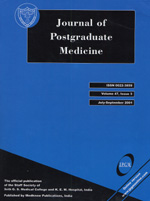
|
Journal of Postgraduate Medicine
Medknow Publications and Staff Society of Seth GS Medical College and KEM Hospital, Mumbai, India
ISSN: 0022-3859 EISSN: 0972-2823
Vol. 50, Num. 4, 2004, pp. 251-252
|
Journal of Postgraduate Medicine, Vol. 50, No. 4, October-December, 2004, pp. 251-252
Expert's Comments
The challenges of eliminating neonatal tetanus
Katz Joanne
Department of International Health
Correspondence Address:Department of International Health, jkatz@jhsph.edu
Code Number: jp04085
Child mortality has been declining rapidly over the past few decades. However, the decline in infant and neonatal mortality has not been nearly as dramatic. This has led to an increasing interest in neonatal mortality and what interventions might be most effective in this age group. Neonatal tetanus is a cause of neonatal death that has well defined risk factors and specific interventions that could be very effective in eliminating this cause of neonatal mortality.[1] Specifically, we have a vaccine that is effective, long lasting, safe to provide in pregnancy and whose impact extends to protect the neonate.[2] In addition, safe birthing practices, including cutting the cord with a clean blade, can be effective in preventing infection.[3] Other potential sources of infection are applications of various substances to the cord, a common practice in many cultures.[4],[5],[6] Much of the literature on risk factors for neonatal tetanus describes rural populations, where the risk may seem greatest. What is most interesting about the paper[7] in this issue of the journal is that it focuses on risk factors in an urban environment where access to care and hygiene conditions are presumed better than in rural areas. As in prior studies conducted in rural areas, maternal illiteracy, home delivery and applications to the cord independently put infants at greater risk for neonatal tetanus among those who have not been protected by maternal immunizations. These risk factors suggest interventions that are practical and feasible, although they require behavior change that is often challenging to effect. Safe birthing kits and the training of birth attendants in their appropriate use should be a focus in urban areas as well as rural ones. Education regarding the risks associated with the application of traditional substances to the cord, perhaps recommending a substitution with inexpensive antiseptics may also have the potential to reduce neonatal tetanus risk as well as other cord infections. Finally, a safe an efficacious vaccine is available, and should continue to constitute a strategy to attain the goal of elimination of neonatal tetanus set by the World Summit for Children.
REFERENCES
| 1. | Vandelaer J, Birmingham M, Gasse F, Kurian M, Shaw C, Garnier S. Tetanus in developing countries: An update on the maternal and neonatal tetanus elimination initiative. Vaccine 2003;21:3442-5. Back to cited text no. 1 [PUBMED] [FULLTEXT] |
| 2. | Greenwood B. Maternal immunization in developing countries. Vaccine 2003:21:3436-41. Back to cited text no. 2 |
| 3. | The Safe Motherhood Initiative. Implementing the safe motherhood action agenda: A resource guide; 2001. Available at http://safemotherhood.org/. Back to cited text no. 3 |
| 4. | Bennett J, Azhar N, Rahim F, Kamil S, Traverso H, Killgore G, et al. Further observations on ghee as a risk factor for neonatal tetanus. Int J Epidemiol 1995;24:643-7. Back to cited text no. 4 [PUBMED] |
| 5. | Bennett J, Ma C, Traverso H, Agha SB, Boring J. Neonatal tetanus associated with topical umbilical ghee: Covert role of cow dung. Int J Epidemiol 1999;28:1172-5. Back to cited text no. 5 [PUBMED] [FULLTEXT] |
| 6. | Traverso HP, Bennett JV, Kahn AJ, Agha SB, Rahim H, Kamil S, et al. Ghee applications to the umbilical cord: A risk factor for neonatal tetanus. Lancet 1989;1:486-8. Back to cited text no. 6 [PUBMED] |
| 7. | Raza SA, Akhtar S, Avan BI, Hamza H, Rahbar MH. A matched case-control study of risk factors for neonatal tetanus in Karachi, Pakistan. J Postgrad Med 2004;50:247-52. Back to cited text no. 7 [PUBMED] |
Copyright 2004 - Journal of Postgraduate Medicine
The following images related to this document are available:
Photo images
[jp04085t1.jpg]
[jp04085t2.jpg]
[jp04085t3.jpg]
|
